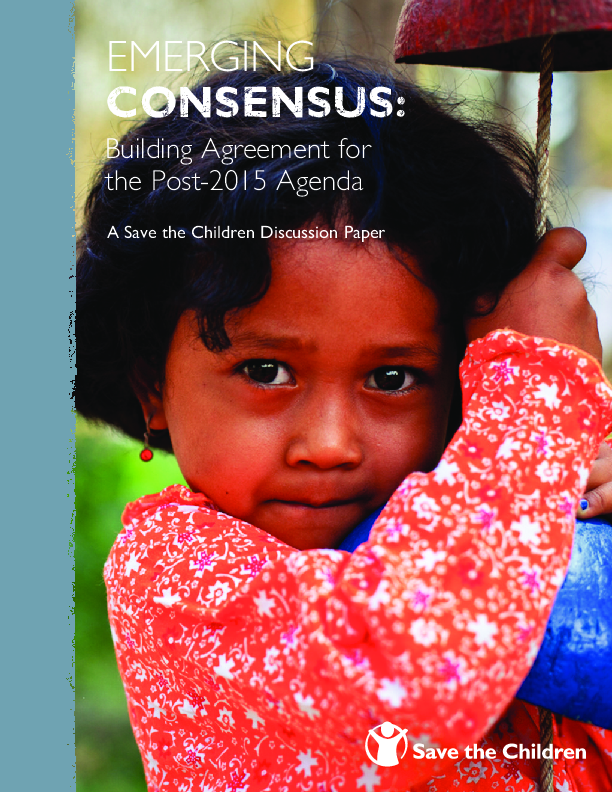
Study: Research
Emerging Consensus: Building Agreement for the Post-2015 Agenda
Publication year:
2014
English
Format:
pdf (5.0 MiB)
Publisher:
Save the Children US
This is a momentous time. The international community is less than one year away from reaching final agreement on a new set of global development goals that can change lives profoundly over the next 15 years, and beyond. We are currently two years into deliberations on what the contours of these goals and targets, the successors to the Millennium Development Goals (MDGs), should look like.
Given the gains made through the MDGs, there continues to be enormous global interest in shaping the post-2015 development agenda, and there have been a broad variety of streams of input into the process thus far. Negotiations on the post-2015 agenda are rightly considered among the most democratic and collaborative in the history of the United Nations. With more than 100 country consultations and thematic debates, a High-Level Panel of experts from across the Global North and South, a global survey that has reached over 5 million people, and 13 meetings of UN Member States through the deliberations of the Open Working Group on Sustainable Development, enormous effort has been put into setting the next round of global development priorities.
Given the rich variety of different perspectives on what the global development agenda should look like for the next 15 years, it is only natural that commentators have often gravitated toward focusing on potential disputes and disagreements. Is such a sweeping new agenda really feasible? Can extreme poverty actually be eliminated? Will negotiations between UN member states produce a clear and limited set of goals with measurable targets that will mobilize social, economic, and environmental action in every country across the world? These are difficult questions that need to be resolved if we are to agree on an agenda that works.
Read full abstract
View & Download
English
1 Documents
Document information
Publisher
Format
Content type
Rights
© Author/Publisher
Found a mistake? Help us improve!
If you have noticed a document assigned to the wrong author or any other inaccuracies, let us know! Your feedback helps us keep our data accurate and useful for everyone.
Share
Link
